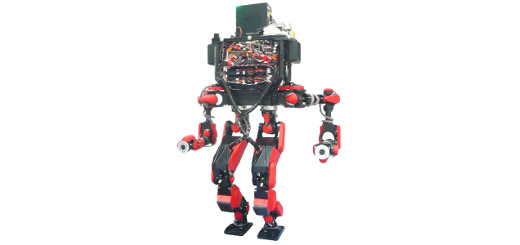For door-to-door delivery, robots must improve gait
Following Sunday’s announcement on “60 Minutes” that Amazon is considering a fleet of package-delivery drones — which was met with more than a few raised eyebrows — the New York Times revealed today that Google has purchased no less than seven robotics companies this year, causing some to speculate that the search giant could eventually target automated delivery using humanoid robots. “Perhaps someday, there will be automated delivery to the doorstep,” the Times muses.
For that idea to work, however, Google will need conquer some pretty big challenges related to bipedal robot locomotion — challenges that will be on full display when the ATLAS robot is put through its paces later this month during the DARPA Robotics Challenge.
Though ATLAS is being programmed by some of the most prestigious names in robotics, there is little doubt that it will take a few tumbles as it attempts to navigate the search-and-rescue scenarios DARPA has planned. In the video below, posted by The Florida Institute for Human and Machine Cognition, you can see the robot stumble as it attempts to navigate uneven terrain.
One of the major goals of the DRC, of course, is to learn from the robot’s falls. That’s why the teams that fare the best this month will be invited back to show off their robots again in the finals, to be held a year from now.
And others are working on the problem of bipedal robot locomotion as well. Researchers from the University of Michigan recently shared the progress of MARLO, an underactuated 3D bipedal robot with passive prosthetic feet. Previously, MARLO was attached to a boom but can now walk without external support.
MARLO is one of three ATRIAS-series robots designed by Jonathan Hurst at Oregon State University (the others are at Carnegie Mellon University and Oregon State). It’s an impressive design, but even with improved control remains attached to a mobile gantry to protect against its inevitable falls. That’s necessary to prevent damage to the robot as well as the humans around it, and it’s a problem that will have to solved before a robot like this can be let loose on its own.
For now, the idea of a robotic FedEx-style worker falls squarely into the “moonshot” category, but neither that concept nor Amazon’s drone idea seems quite as crazy as it would have a few years ago. Of course, before robots can run, they need to walk — preferably without toppling over every time they step outside the controlled confines of a lab.
[ photo courtesy of the University of Michigan ]



